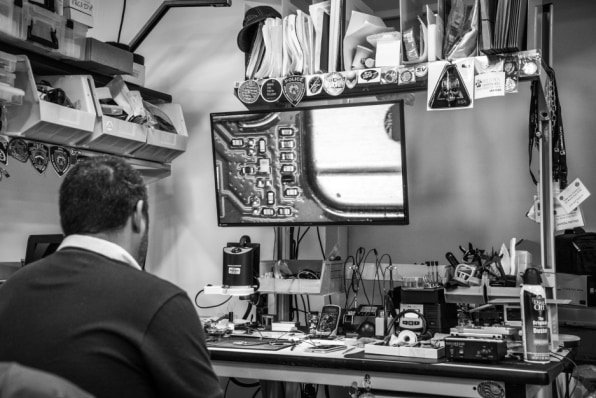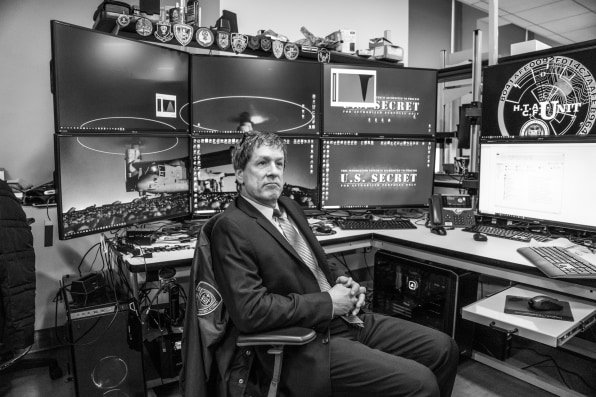This is what a $10 million iPhone-cracking lab looks like

What you need to know
- New York City has a $10 million lab dedicated to accessing iPhones and iPads.
- The High Technology Analysis Unit was built to get the information law enforcement needs.
- It even has an RF isolation chamber.
Money might not be able to buy you happiness, but it can definitely buy you a state-of-the-art iPhone-cracking lab in New York City. So long as you have a spare $10 million, that is.
With iPhone security and Apple's stance on giving law enforcement access to data such a hot button topic right now, Fast Company has shared a look inside New York City's High Technology Analysis Unit. And it's quite the look, too.
The brainchild of district attorney Cyrus Vance Jr, the building even has its own RF isolation chamber to prevent those being investigated from being able to remotely wipe devices inside.
The entrance to the radiofrequency isolation chamber, near the middle of the Lefkowitz Building in lower Manhattan, looks like an artifact from the Apollo program, shielded by two airtight, metallic doors that are specially designed to block electromagnetic waves. Inside the room, against one wall, are dozens of Apple iPhones and iPads in various states of disrepair. Some have cracked glass fronts or broken cases. Others look like they've been fished out of a smoldering campfire. Of course, the devices are not there to be fixed. They are evidence confiscated during the commission of alleged crimes.The district attorney of Manhattan, Cyrus Vance Jr., and the city's cybercrime unit have built this electronic prison for a very specific purpose: to try, using brute force algorithms, to extract the data on the phones before their owners try to wipe the contents remotely.

The report is one that is well worth your time, and the sheer scale of the operation may well surprise. According to the report, there were almost 3,000 phones present. And they were the ones that the unit's director, Steven Moran, wasn't able to crack.
On the day I visited the cyber lab, there were nearly 3,000 phones, most related to active criminal investigations, that Moran had not yet been able to access. The team has built a proprietary workflow management program, using open source software, to triage the incredible volume of incoming devices and to escalate the most important cases. "So if a third party were to say 'hey, we have a solution that will work on iOS 12.1.2 and it costs X amount of dollars,' I can see within five seconds that that's going to affect 16 different phones," Moran says.
Be sure to read the Fast Company piece for all the gory details, including a machine able to run up to 26 million password combinations each and every second. It's absolutely an eye-opener.
iMore offers spot-on advice and guidance from our team of experts, with decades of Apple device experience to lean on. Learn more with iMore!

Oliver Haslam has written about Apple and the wider technology business for more than a decade with bylines on How-To Geek, PC Mag, iDownloadBlog, and many more. He has also been published in print for Macworld, including cover stories. At iMore, Oliver is involved in daily news coverage and, not being short of opinions, has been known to 'explain' those thoughts in more detail, too.
Having grown up using PCs and spending far too much money on graphics card and flashy RAM, Oliver switched to the Mac with a G5 iMac and hasn't looked back. Since then he's seen the growth of the smartphone world, backed by iPhone, and new product categories come and go. Current expertise includes iOS, macOS, streaming services, and pretty much anything that has a battery or plugs into a wall. Oliver also covers mobile gaming for iMore, with Apple Arcade a particular focus. He's been gaming since the Atari 2600 days and still struggles to comprehend the fact he can play console quality titles on his pocket computer.
